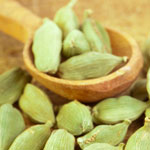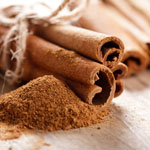
Interview with Dr. Vilas Nanal
29.08.2007 | "Ayurveda deserves to be not alternative but a mainstream medicine." Vilas Nanal is the third generation of the living Nanal Tradition. Born into a family of thinkers, practitioners and researchers of Ayurveda, he continues to maintain and uplift the tradition cultivated for almost a century. As an Occupational Therapist he had extensive exposure to modern thinking and practice in the beginning of his career, after which he took to study Ayurveda till his post graduation. He is a teacher of graduate, post graduate and doctoral candidates along with autonomous courses. He is wellknown because of his knowledge about Ischemic Heart Disease, HIV/AIDS and knee joint disorders. He has traveled extensively in Europe for propagation of Ayurveda for a decade.
ayurveda-portal.de: How did you get into Ayurveda?
Vilas Nanal: I was born into it! (Laughing!)
Really! I belong to a family of Physicians of Ayurveda. My grandfather was the founder of the Ayurveda College in Pune. My father studied under him and in the college. So he had both the traditional and the institutional education.
I had also studied from my father as a child. I used to accompany him to various markets to purchase raw materials. From the very beginning I was interested and I was introduced to Ayurveda that way. I have, I would say, hands on training.
And then I joined the Occuaptional Therapy Scool, Seth G.S. Medical College, Mumbai college. It is a paramedical School offering bachelor of Science Degree and I studied under really renowned doctors of that time.
I worked in a general hospital in Bombay for two years and then I took to Ayurveda. So I was about 6 years late in taking admission. I completed my graduation in Bombay University. Because of my fathers ill health I had to shift to Poona where I completed my post graduation. Now I am teaching from 1978 in the same institute where I post graduated from. I am a teacher, I am guide for doctoral Ph.D.. There are some students registered under me.
This is about my entry to Ayurveda up to the current state. So I would say I have a little background of modern medicine. I would say I am well educated as far as Ayurveda is concerned, both from the traditional point of view as well as from institutional educational point of view.
My son is also an Ayurvedic doctor. He has a postgraduate Panchakarma diploma and a postgraduate degree M.D.in kaya chikitsa. He will be joining me now as a junior next month in June.
So it is four generations. I think it was right to say I was born into Ayurveda. (Laughing)
ayurveda-portal.de: How do you see the development of Ayurveda in Germany and in India?
Vilas Nanal: India is the country of origin of Ayurveda. India has a very well developed educational structure about Ayurveda. You can study up to doctoral level in India. We have 220 colleges of Ayurveda in India. We have education upto graduation, post graduation and doctoral studies level. There is one University entirely devoted to only Ayurveda, the University of Ayurveda in Jamnagar, Gujarat. There are some proposed Universities which are coming up. The state where I stay in Maharashta has a University which is common for all medical systems. We call it Maharashta University of Health Sciences. They have all medical courses under one roof, except pharmacy. There are some other proposed universities coming up for training of Ayurveda. From that point of view I would say Ayurveda is very well established. Acceptance of Ayurveda in general public is also there. There are figures that in bigger cities there are up to 30% people seeking Ayurvedic treatment and in the rural area the percentage goes almost up to 97%.
That is how things are working there.
In Germany I started coming as a consultant from 1996 on. I see there is definitely a rising awareness about Ayurveda. A lot of people know there is something called Ayurveda, may be in the field of complementary or alternative medicine. They are open to Ayurveda. About Ayurvedic education, I really don’t know too much about, how many people are there offering courses and all that. But what my feeling or understanding is after talking to my clients and my patients is that they look at it more from the cosmetic, wellness, spa kind of a thing. This is what I feel is not right. Ayurveda is not about only wellness or about only massages. It is a scientific health care delivery system. A lot needs to be done to give Ayurveda its rightful place.
ayurveda-portal.de: What in your opinion should be the steps to improve the education on Ayurveda in the western countries?
Vilas Nanal: First thing in my opinion, if we are to bring about any reforms in education this has to begin in India itself. The people who are going to come here to teach have to be really equipped.
For example: I get a student for Ayurveda as a first year student who has only studied modern sciences like physics, chemistry, biology or English… he doesn’t have any grounding in the ancient Indian philosophies or way of thinking. They need to be introduced somewhere in the course of his school or career. I think there should be a provision for a two year introduction to Ayurveda before he takes admission to professional Ayurveda Course. So I have a graduate who is ready to study Ayurveda, who is ready to take Ayurveda as a career. Not a person who gets admitted because he had no other way to go anywhere. So we are talking about complete mindset change, 180 degree change. And if this happens then may be over a period of time we’ll have good people who really believe in Ayurveda . That is the day I am really working for and hoping for.
What you see in Germany is only some superficial, peripheral courses been imparted. Nothing much serious has been taught in the way it should be taught. This is my feeling. You conduct a course of five days for a synchrone massage, you conduct a course for shirodhara and all that without proper understanding: Why is it needed, what are the criteria for selectionof this particular procedure? What is the basis for selecting a particular oil, how long should it be done. We are talking about a procedure. That procedure has to be indicated. We cannot just go on doing what ever we want to do. That is were I see a lot of scope that could be done.
We don’t need to popularize Ayurveda. It did help in a way. But the perception of these people is what: some massage, some relaxation! They don’t believe Ayurveda to be a scientific system of knowledge. It served us getting some recognition but now it is limiting us from progressing further as health care delivery system.
The other way is to start educate Germans ourselves. The plans are underway towards this end. I do not want to commit anything just now.
ayurveda-portal.de: That leads us to our next question: what other projects are you working on at the moment?
Vilas Nanal: There are certain projects we are working on in India.
I have been working on a heart disease project from 1990: ischemic heart disease where people have been advised to take surgery but are scared or don’t want to undergo surgery because of different reasons like costs, age, psychological, social reasons. We are treating them, getting good results. But the problem again is getting a repeat angiography done, they are not ready,
So, I wouldn’t be able to talk about the effects, what exactly happens with the ayurvedic medicine: whether the plaque is resolved or if there is a spontaneous collateral circulation developing…
I have more than 600 cases so far. This is one thing which is ongoing.
The other thing what we are working on since two years is degenerative knee joint disorders. In India we have a lot of knee joint disorders because of osteoporosis and the difficult postures that are typical for us like squatting on the toilet, kneeling and sitting on the floor.
And I have written a book about that.
The third project we are working on is HIV. There is a bloodbank we co operate with. It is mandatory in India that if you want to donate blood it is checked for HCV and HIV. If it is positive they send the patient to us for treatment. So far I have more than 700 cases over a decade.
But same again: I cannot do checks that are necessary every three months, I cannot do a viral count every six months. All of this would be necessary to evaluate the treatments. But the costs would be too high. We are providing medicines at our own costs and from the donations. As of now there are more than 700 cases. But if you ask me for concrete details they are not there – we have not been able to document them for want of funds. I have been able to retain cases for more than 11 or 12 years in a tropical country which is not bad. They remain positive but they don’t proceed to HIV complex. There are some symptoms which I have found in my cases that are not found in the classical HIV complex that they describe.
Another project I am involved with is AyuSoft – software based on the Ayurvedic ancient literature we have. AyuSoft is developed by C-DAC “Centre for Development of Advanced Computing” and consists of a set of products.
We have used four texts of Ayurveda: Charaka Samhita, Sushruta Samhita, Ashtanga Hridaya and Madhava Nidana as main source and some other texts as a supplemental source.
AyuSoft is a vision of converting classical Ayurvedic texts into comprehensive, authentic, intelligent and interactive knowledge repositories with complex analytical tools. First it is a disease diagnostic tool and is helping physicians in diagnosing.
The second is to generate a prescription after examination coming to a diagnosis. It is a patient information management system.
The third is the encyclopaedia, it contains about 500 articles.
Then there is a glossary containing about 1500 technical words and all the possible facets: references, various commentators for the English and Sanskrit Texts.
And there is a data mining tool with more than ½ Million entries. If you want to search it, you have more than over 17 templates and 272 Parameters. You can generate different queries and get a reply. It is a very massive project.
The Health Department is now taking over the propagation of this. You can purchase it now.
I was coordinator there. The main purpose is to make it easier for all the young people who are much more computer literate than my generation. There are so many young students now taking admission…for them it is easy.
For example for diagnosis: We have taken more than 3000 symptoms. For an ordinary physician to have all those symptoms in his mind it’s not possible. So he is likely to miss and he goes by what is most evident. But with AyuSoft all possible diseases are taken into consideration. We think it will be a very good tool to educate second yearstudents when their clinical work begins. And it is a first step into standardizing the data.
Westerners could use this kind of software as well. But they would need a deep understanding because there are only technical Sanskrit terms there. And people need to be trained before using it.
Another Software which we have developed is about Marmas. It is a famous topic by now - the vital points on the body. If they are hurt or if they are affected what will happen. It shows not only the location of the different points but as well the classification, the effects, the complications, residual damage and management including a small glossary.
And we are working on interpretation of pulse, Nadi. It is very highly subjective and needs lot of interpretation. If there is a possibility we would like to turn this more into a logical and comprehensible way of diagnosis.
There is a machine developed and they started with pulse monitoring which is now a part of intensive care management system, in Pune at least.
We as physicians, (we are four at the moment), see the case first as individual. We each record our findings and then we subject the patient to the machine. It is all cross referenced - no personal bias. And we do that three, four times – once on empty stomach, once after breakfast, once after lunch… It is in a very initial state. It is only two months that we have started. I think in two years time we will know more.
ayurveda-portal.de: In a way you are cannibalising your own work…
Vilas Nanal: Not really, because it is already difficult to find someone who is diagnosing only by Nadi. We want to keep the knowledge it is our national heritage science.
And…if we don’t do it somebody else will do it…for example somebody from Japan will do it. Its better we will do it! … (Laughing)
ayurveda-portal.de: Do you think that the ancient Ayurvedic texts can be applied as they are?
Vilas Nanal: They can be applied as they are. I am doing it every day in my teaching. I take only Charaka Samhita in my class and no translations: Just Charaka Samhita and one of the commentators, is the most famous “Chakrapani”.
I can apply them in real practice, what it needs is a little innovation to a minor part.
Study your sutra and then try to make it understandable or interesting to the audience. The sutra remains the same. The content remains the same. Only the matter of rendering makes it either interesting or boring.
In my opinion you can use any one of the ancient texts. Take it to a class and take it into practice. Even if I have sometimes a problem and I feel that I don’t make any progress with a particular patient. I have to go on and look into Charaka and I generally find the answer there.
It is my opinion that because of this particular potential of these ancient texts they are surviving against all odds. Otherwise they would be lost. By their words structure they are so wonderful, they are so organized. You can’t really put a finger there and make a dent anywhere….they are absolutely logical. And there is no place for any sentiments there.
This is the situation, this is how we diagnose it and these are the symptoms and this is what you do to correct it. And they are only talking about managing those cases which in their opinion are curable. They don’t talk about incurable diseases.
So if I don’t find a mention of a particular disease in Charaka Samhita it doesn’t daunt me. It’s ok. Charaka has taken account of almost all the diseases which were relevant at his time. He has provided measures how to study a disease which was not known during his time.
He has given a theme if you follow that you can diagnose any situation. He has talked about how to study a new substance which may be available later. So he has made provisions, he has not left any end loose.
You can take any plant and follow the directions of the text, how to study a new plant. That is what we have done with tomatoes, cauliflower or cheese. They are not mentioned in the texts any where, but we are still eating it. We still recommend to refrain or to consume it, based on the knowledge which I get from Charaka.
It is totally logic. Even in next 10000 years it will be logic – if human kind is still around to use it (laughing).
ayurveda-portal.de: You are a well known Ayurvedic doctor and you have a very traditional background. Do you still have a guru?
Vilas Nanal: As of now, no. I had some people from the time of my studies.
My first teacher was my father of course. My grandfather passed away before I was born. He must have been a great man. With all his work he has done during his short life. It was amazing. He was the first person who realized that it is absolutely necessary to institutionalize Ayurvedic education, because traditionally it would not be possible. There is a limit. Even if you want to learn with a guru you are not accepted. There are hundreds of students every year who are interested. To accommodate this number of students you need to institutionalize the education . He started an institution, he founded a simultaneous teaching hospital and he founded a pharmacy to teach people. Then he established a gymnasium and then he was a Vice chancellor – all this in just 52 years.
My father worked with minerals, metals and he practiced with single medicines. That is our speciality – working with single herbs. It is our tradition. That is what we always did.
Nobody else generally does. They don’t want to fail. I think that working with compounds and mixtures comes out of insecurity. For example when I came to Germany I started to teach with 20 single herbs.
ayurveda-portal.de: Do you give consultations here in Germany?
Vilas Nanal: Yes, there are three places where I consult:
I work with Andreas Posur in Ingolstadt. He is Heilpraktiker and he has a Naturheilpraxis of his own, he has a pancha karma center. He is well trained and can look after the patients. He is an accomplished teacher himself.
In addition to that I work with Heilpraktiker Dieter Scherer in Munich and Garmisch-Partenkirchen. Dieter has a Heilpraxis for traditional Ayurveda and is multiple book-author.
Usually I come twice a year.
Whenever there are patients they think I should consult I consult, I write a prescription about single herbs which I talked about and plan a Pancha karma therapy or any subsequently therapy.
ayurveda-portal.de: Do you have your own clinic in Pune?
Vilas Nanal: Yes, we have mainly Indians from all over the country. Sometimes we treat Westerners but rarely.
I prepare my own medicines. I have a Pancha Karma Center and the foundation for Ayurveda. It is a complete Center. My son is helping out, my daughter in law is also an Ayurvedic Doctor and she is helping me out. We started developing some products of Ayurveda: for example next year we come out with a gel for hair and body. Especially for females who have a problem with laxity of the bodies – like flabby thighs, breasts, flabby abdomen, etc.
We are developing some Ayurvedic wines now and spirits too. We are also developing some cigarettes without tobacco, only herbal cigarettes.
ayurveda-portal.de: What do you think about Ayurveda-portal.de?
Vilas Nanal: I think very highly about it. It is a very good idea, a good effort and it should be continued. I think it is necessary to start with English information too, now. To make it more useful to people like us. If you start something in English it we will become global in the true sense.
Ayurveda is going to be global. You can’t really stop it any more. It is now definitely time to work together, keeping personal egos aside and working for Ayurveda together. Ayurveda deserves to be not alternative but a mainstream medicine, it has the potential.
ayurveda-portal.de: Is there anything like an advice or recommendation you would like to give our visitors on their Ayurvedic path?
Vilas Nanal: I would ask them to study more (laughing)…no, really, what you studied so far is fine, but try to improve on it and try to implement it in your Ayurvedic practice. If you are not a physician or practitioner, try to implement it in your life, may be in your family so that you are a better person. You should not be afraid of facing yourself in the mirror.
Study Ayurveda and practice it. This is an education that has no end. You can only be better. If you don’t progress, you stagnate. They can feel free if they want if they feel that I can be of help, I will be there. Contact me by e-mail that is no problem.
ayurveda-portal.de: That is a great offer! Thank you very much for it and thank you very much for this interview and for your time.
Vaidya Vilas Nanal
Books published and Articles contributed:
1. Tulasi in Hindi with Vaidya Ramesh Nanal,
2. Atisara in Marathi with Vaidya Ramesh Nanal,
3. Arogyasathi Ayurveda third edition in Marathi,
4. Swasthya ani Maalish third edition in Marathi,
5. Principles of Food and Nutrition in English with Vaidya Ramesh Nanal,
6. Mental Health in Traditional Medicine in Hindi and English,
7. Marma Vidnyaana in Hindi,
8. Joint Afflictions and their Ayurvedic Perspective in English,
9. Insights into Ayurveda in English
10. Some Cardiotonic Herbs in English
11. Principi Ayurvedici Per Una Sana Alimentazione in Italian,
12. Manasaroga in Italian,
13. Massagio Ayurvedico in Italia



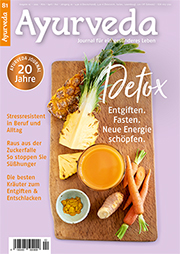

.png)

.png)
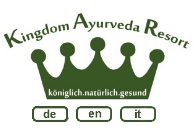
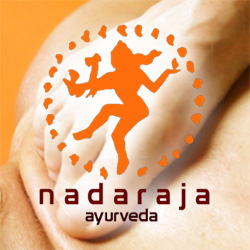
.jpg)
